Yin-yang
| By: Carl Teichrib; ©2002 |
| Unknown to many in North America, the Yin-yang can be sourced to the early Chinese philosophy of dualism, which centers on the idea that the entire cosmos is composed of equal negative and positive energies. The Yin-yang is the symbolic representation of this doctrine. But this doctrine is not unique to the Chinese. Carl Teichrib explains. |
- We all react to what we see. Just as sounds and odors influence our behavior, so do visual patterns and shapes. —Anton Szandor LaVey, The Devil’s Notebook, p. 111.
- Symbolism began with the first communication of ideas among men. It is the outward sign of an inner concept—a word, an image, a gesture which tells, to the one who is of the inner circle, the story of a secret and often arbitrary association. —J.D. Buck, Mystic Masonry, p. ix (preface to the third edition).
- Symbolical instruction is recommended by the constant and uniform usage of antiquity; and it has retained its influence throughout all ages, as a system of mysterious communication. — Albert Pike, Morals and Dogma, p. 372.
Erwin Watermeyer, an initiated Rosicrucian, explained in an article published in the Rosicrucian Digest, that “throughout his studies the student of mysticism meets manifold symbols. They face him from books and from temple walls….”
Students of the occult are not the only ones who see “manifold symbols.” Throughout North America, and all over the world, esoteric symbols are prominently displayed on temples, public buildings, educational institutes, statues, monuments, shields and crests, and even on money. Inevitably, each one of us will encounter occult symbols sometime, somewhere. Many of us see mystical symbols on a daily basis as we travel or conduct business. In the United States, the Great Seal on the back of the one dollar bill is a prime example of a “daily” esoteric symbol (Joseph Campbell’s book The Power of Myth has a fairly good explanation of the Great Seal’s significance).
Mystical symbols act as an authentic language system to those who understand its speech. Moreover, the symbols in our discussion contain spiritual dimensions, wrapped in centuries of mysticism and occultism; this is not about simple road signs and traffic markers. Sadly, occult symbols—“road markers” which point the way to “alternative doctrines” — have been openly propagated by the rapid advancement of the New Age Movement. Today’s neo-pagan world is awash in this ancient esoteric language.
Steeped in the philosophies of pagan mystery religions and secret societies, this neopagan foundation forms a spiritual alternative to the Biblical worldview; fully equipped with alternative histories, alternative ways of salvation, alternative gods, and alternative realities—the truth of God has been traded for a lie.
Understanding this greatly amplifies the words of Proverbs 14:12, “There is a way that seems right to a man, but in the end it leads to death.”
Manly P. Hall, one of the most influential occultists of the last century, wrote this of symbols, “They are centers of a mighty force, figures pregnant with an awful power…” (Lectures on Ancient Philosophy, p. 356)
Contents
Yin-yang
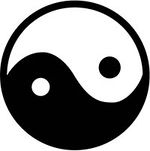
While the Yin-yang is first and foremost a Chinese symbol, it has become extremely fashionable in American pop-culture. Much of this fascination can be traced to the surge of interest in Oriental martial arts, and especially the Korean-based Tae-Kwon-Do form—which often incorporates the Korean Yin-yang flag into local dojo and club logos.
Unknown to many in North American, the Korean Yin-yang flag and the now-common yin-yang symbol can be sourced to the early Chinese philosophy of dualism. Found in the writings of the I Ching—an ancient book which teaches that everything is governed by an “immutable Law of Change” —this dualism philosophy centers on the idea that the entire cosmos is composed of equal negative and positive energies. And the Yin-yang is the symbolic representation of this doctrine.
In referring to the Yin and Yang, the translator of the I Ching, John Blofeld, explained the symbol’s dualistic significance,
- The former symbolize the qualities of the Yin principle—earthly, passive, negative, female, dark and so forth; the latter symbolize the opposite qualities—heavenly, active, positive, male, light, etc. Neither is in itself better or worse than the other, for the two principles have an equal part to play in the totality of existence.
As a readily identifiable symbol, the Yin-yang is the most recognized representation of this dualistic philosophy. However, while the Yin-yang is the premier symbol, this cosmic-doctrine isn’t unique to the Chinese. Albert Mackey, an esteemed Masonic/occult historian, explained that this light-dark principle was to be found in the mystery religions of Egypt and Persia, and among many other ancient societies and religious orders. Pythagoras—a Greek philosopher of mathematics, astronomy, and musical theory—also taught a doctrine of “two antagonistic principles.”
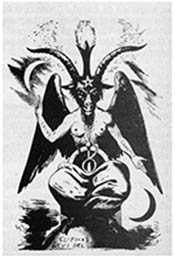
Eliphas Levi, a practitioner of occult sciences and mysticism during the 1800’s, symbolized this philosophy of dualism in his infamous painting of Baphomet— a demonic male/female composite entity who physically points to the two principles of light and darkness (as represented by the two crescent moons). Not surprisingly, esoteric Freemasonry—which was influenced by Levi and his contemporaries—also teaches a dualism cosmology.
Linking the ancient mystery religions to the Lodge, Mackey points out,
- The same religious sentiment of the ancients, modified, however, in its details, by our better knowledge of divine things, has supplied Freemasonry with a double symbolism —that of Light and Darkness.
- Darkness is the symbol of initiation. It is intended to remind the candidate of his ignorance, which Masonry is to enlighten; of his evil nature, which Masonry is to purify; of the world, in whose obscurity he has been wandering, and from which Masonry is to rescue him.
- Light, on the other hand, is the symbol of the autopsy, the sight of the mysteries, the intrusting, the full fruition of masonic truth and knowledge. [The Symbolism of Freemasonry, p. 156—italics in original]
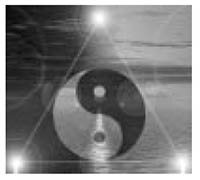
This doctrine of cosmic dualism, as expressed by Mackey and symbolized in the Yin-yang, contends that all of existence is infused with this dual reality—including God. This is further reflected in Madame Blavatsky’s massive two-volume occult text, The Secret Doctrine, which has become a type of scripture for the New Age Movement. In volume two Blavatsky wrote, “when the Church… curses Satan, it curses the cosmic reflection of God.” She also declared that “God” reveals “itself as Light and Shadow, good and evil in nature….” And, “Lucifer is divine and terrestrial light, the ‘Holy Ghost’ and ‘Satan,’ at one and the same time.”
Is God “Light and Shadow, good and evil in nature”? Is the Holy Ghost and Satan one and the same? Heaven forbid! The Yin-yang philosophy of dualism proclaims that God is completely and eternally good and evil, dark and light, negative and positive, creative and destructive. According to the I Ching and subsequent occult teachings, all things—God included—are subject to this antagonistic cosmic law.
Yet the Bible tells us differently. In John 8:12, Jesus proclaimed, “I am the light of the world. Whoever follows me will never walk in darkness, but will have the light of life.” First John 1:5 clearly tells us that, “God is light, in Him there is no darkness at all.” To say this contradicts the I Ching and the Yin-yang is an understatement.
In wrapping up this issue of cosmic dualism as espoused by the I Ching and the symbolism of the Yin-yang, we must consider the words of 2 Corinthians 6:14. Here, Paul approaches the subject of spiritual light-and-darkness by asking a rhetorical question, “what do righteousness and wickedness have in common? Or what fellowship can light have with darkness?”
After reflecting on the meaning of the Yin-yang and the doctrine of dualism, the question becomes as important today as it was in Paul’s time. “… in Him there is no darkness at all.”
Carl Teichrib is a researcher and freelance writer on global religious and political trends. His material has been used by numerous authors, organizations, and other researchers across North America and oversees.


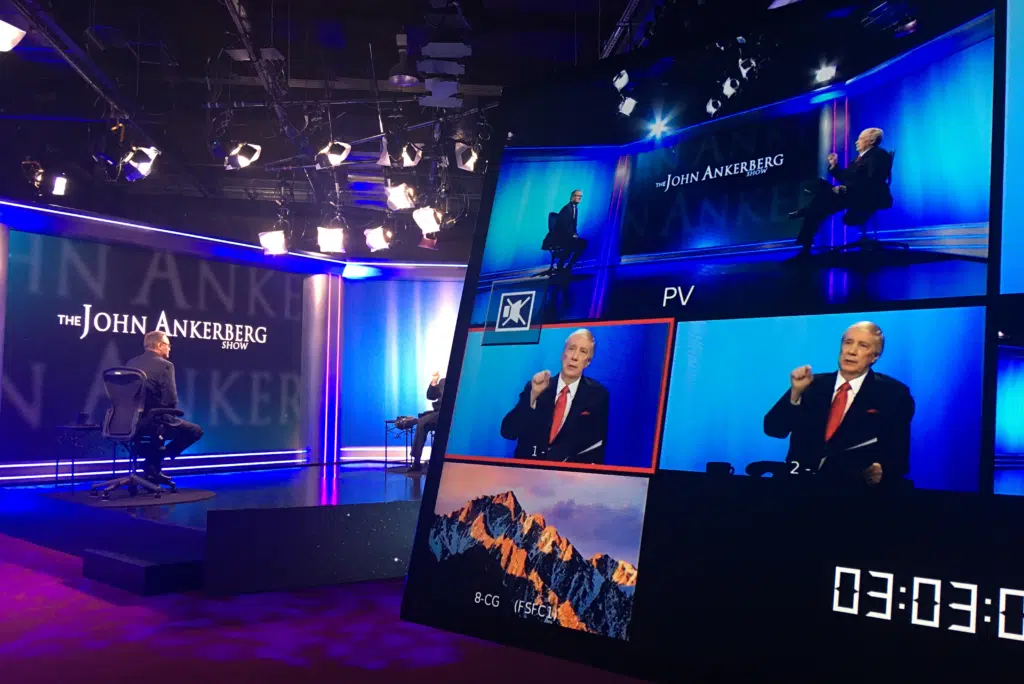
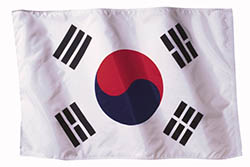




[…] Yin-yang By: Carl Teichrib […]
[…] Read Part 19 […]
[…] REDIRECT Yin-yang […]